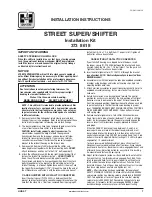
If a stationary vehicle is hidden behind a vehicle that has been detected by the adaptive cruise
control and this vehicle turns off the road or changes lane, the ACC will not react to the stationary
vehicle
⇒
Fig. 144
.
Bends
The radar sensor always measures straight ahead. For this reason, vehicles may be incorrectly
detected or vehicles driving ahead not detected in tight bends
⇒
Fig. 143
.
Vehicles outside the sensor range
• Vehicles that are driving outside the sensor range in close proximity to your vehicle, e.g.
motorbikes
⇒
Fig. 143
.
• Vehicles that change into your lane directly in front of your vehicle
⇒
Fig. 144
.
• Vehicles with bodies or attachments that project beyond the vehicle.
Switching ACC on and off
Fig. 145
Left-hand side of the multifunction steering wheel: buttons for operating ACC
First read and observe the introductoryinformation and safety warnings
⇒
Introduction
Switching on ACC
• Press the
button.
The indicator lamp
lights up grey, ACC does not regulate.
Starting control
• Press the
button while driving forwards.
ACC stores the current speed and maintains the set distance. If the current speed is outside the
defined speed range, ACC will set the minimum speed (when driving more slowly than the limit) or
maximum speed (when driving faster than the limit).
The following indicator lamps light up, depending on the driving situation:
ACC regulating.
No vehicle has been detected ahead.
Vehicle detected ahead (white).
Interrupting control
• Briefly press the
button or press the brake pedal.
The indicator lamp
lights up grey, the speed and distance remain stored.
Control is automatically interrupted if the traction control system (TCS) is deactivated.
Resuming control
• Press the
button.
ACC adopts the last set speed and last set distance. The instrument cluster display shows the set
speed and the indicator lamp
lights up green.
Switching off ACC
• Press and hold the
button.
The set speed is deleted.
Changing to the speed limiter
If you use ACC in the above situations, this can result in accidents and serious injuries as
well as violation of legal regulations.
WARNING
















































